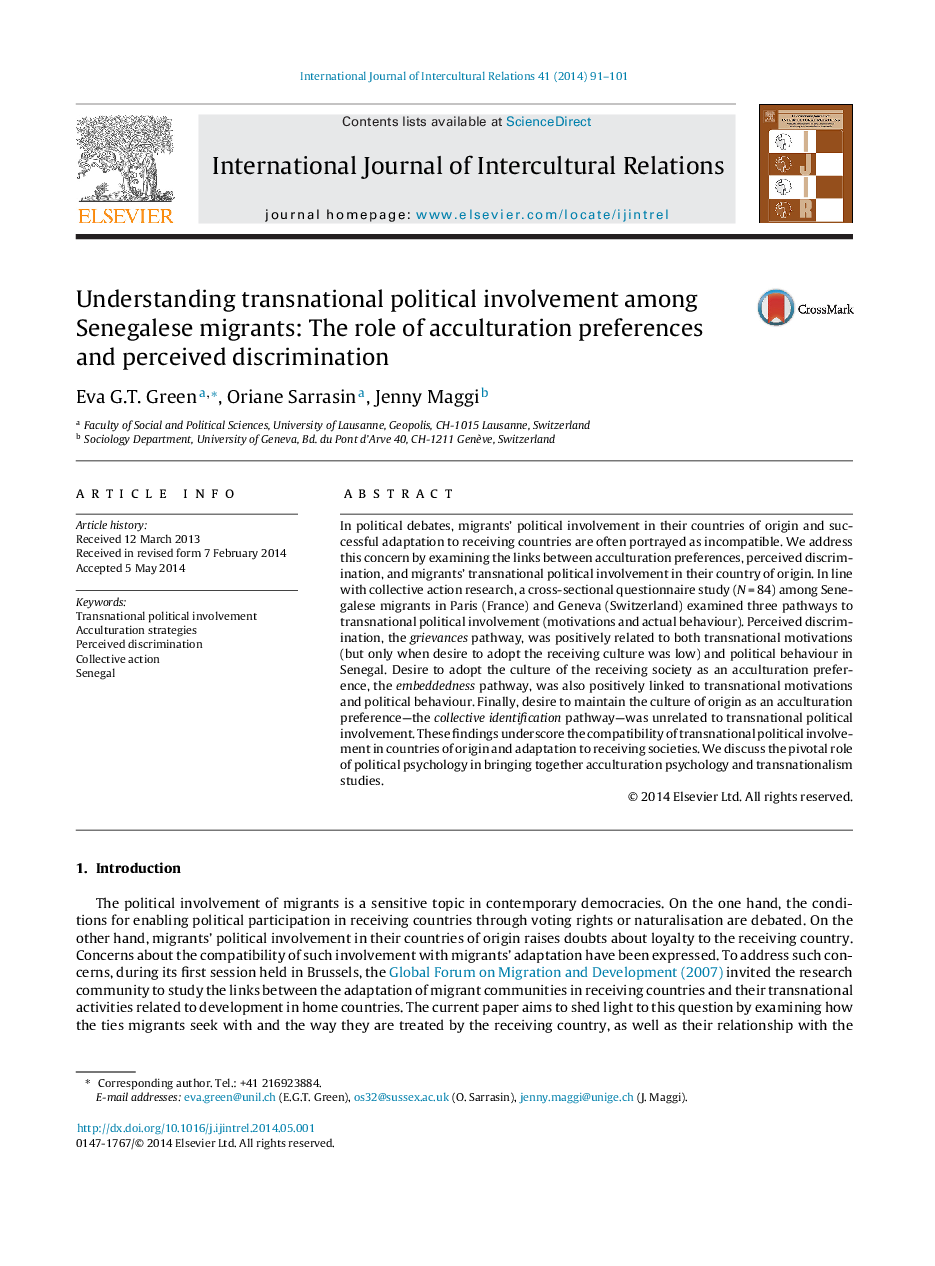| Article ID | Journal | Published Year | Pages | File Type |
|---|---|---|---|---|
| 946972 | International Journal of Intercultural Relations | 2014 | 11 Pages |
•Transnational political involvement and adaptation in receiving societies are compatible.•Two pathways to transnational political involvement were revealed.•Perceived discrimination positively related to transnational political involvement.•Desire to adopt host country culture positively related to transnational political involvement.
In political debates, migrants’ political involvement in their countries of origin and successful adaptation to receiving countries are often portrayed as incompatible. We address this concern by examining the links between acculturation preferences, perceived discrimination, and migrants’ transnational political involvement in their country of origin. In line with collective action research, a cross-sectional questionnaire study (N = 84) among Senegalese migrants in Paris (France) and Geneva (Switzerland) examined three pathways to transnational political involvement (motivations and actual behaviour). Perceived discrimination, the grievances pathway, was positively related to both transnational motivations (but only when desire to adopt the receiving culture was low) and political behaviour in Senegal. Desire to adopt the culture of the receiving society as an acculturation preference, the embeddedness pathway, was also positively linked to transnational motivations and political behaviour. Finally, desire to maintain the culture of origin as an acculturation preference—the collective identification pathway—was unrelated to transnational political involvement. These findings underscore the compatibility of transnational political involvement in countries of origin and adaptation to receiving societies. We discuss the pivotal role of political psychology in bringing together acculturation psychology and transnationalism studies.
